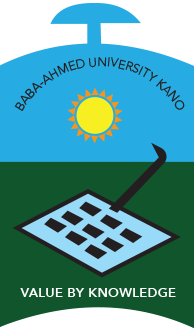Computer Science Keypoints: Programming Language Structure; Programming language structure forms the backbone of software development, providing a set of rules and conventions for creating executable programs.
Study other Computer Science Keypoints here
This intricate system encompasses various elements, including basic statements, operators, subunits, and different types of data. In this comprehensive overview, we will delve into the key components of programming language structure, shedding light on their syntax, functions, and significance.
II. Features and Syntax
(a) Keywords
Keywords are reserved words in a programming language that carry specific meanings and functionalities. Examples include “if,” “else,” “while,” and “for.” These words are fundamental in creating the structure of code and defining its logical flow.
Example: In Python, the keyword “def” is used to declare a function.
(b) Variable Types
Variables are containers for storing data values. Variable types define the nature of the data a variable can hold, such as integers, floats, or strings.
Example: In Java, declaring an integer variable: int age = 25;
Study other Computer Science Keypoints here
(c) Constants/Literals
Constants or literals are fixed values that do not change during program execution. They can be numeric, string, or alphanumeric.
Example: In C++, defining a constant: const double PI = 3.14;
(d) Numeric String/Alphanumeric
Numeric strings or alphanumeric values involve combining numbers and letters within a string. This is commonly used in handling identifiers or creating dynamic content.
Example: In JavaScript, concatenating a string and a number: let result = "Value: " + 42;
Basic Characteristics of the Language
Programming languages exhibit unique characteristics that distinguish them from others, such as being compiled or interpreted, statically or dynamically typed, and procedural or object-oriented.
Study other Computer Science Keypoints here
Example: Python is an interpreted, dynamically typed language with support for both procedural and object-oriented programming.
III. Basic Statements
Basic statements are the building blocks of a program, responsible for input, output, processing, and comments.
Input
Input statements collect data from users or external sources to be used in the program.
Example: In Java, reading user input: Scanner scanner = new Scanner(System.in); int userInput = scanner.nextInt();
Output
Output statements display results or information to the user or other components.
Example: In Python, printing to the console: print("Hello, World!")
Processing
Processing statements perform operations on data, manipulating it to achieve desired outcomes.
Example: In C, performing arithmetic operations: int sum = num1 + num2;
Comments
Comments are non-executable lines used for documentation, providing context or explanations within the code.
Example: In HTML, adding a comment: <!-- This is a comment -->
IV. Subunits
Subunits encapsulate code into modular components, enhancing readability and maintainability.
Functions, Procedures, Methods, Subroutines, etc.
These subunits encapsulate reusable pieces of code, promoting code organization and reusability.
Example: In Python, defining a function:
pythonCopy code
def greet(name): return "Hello, " + name + "!"
Statements
Statements within subunits include iteration/loop, conditional, assignment, and dimension statements.
Example: In C#, a conditional statement:
csharpCopy code
if (temperature > 30) { Console.WriteLine("It's a hot day!"); }
V. Arithmetic Operators and Expressions
Arithmetic operators perform mathematical operations on numeric data.
Example: In JavaScript, using addition: let sum = 5 + 3;
VI. String Operators and Expressions
String operators manipulate and concatenate strings, facilitating text processing.
Example: In PHP, concatenating strings: $greeting = "Hello, " . $name;
VII. Built-in Functions
Built-in functions are pre-defined functions provided by the programming language for common tasks.
Example: In Ruby, using the length method: str_length = "Hello".length
VIII. Primitive Data
Primitive data types include integers, floats, booleans, characters, etc.
Example: In Swift, declaring a boolean: let isRaining: Bool = true
IX. Non-Primitive Data Types
Non-primitive data types encompass arrays, classes, strings, etc., providing more complex structures.
Example: In Java, creating an array: int[] numbers = {1, 2, 3, 4, 5};
X. Complex Data Structures
Complex data structures like trees, graphs, linked lists, and objects are advanced organizational tools.
Example: In C++, defining a class:
cppCopy code
class Person { public: string name; int age; };
This detailed exploration of programming language structure provides a solid foundation for understanding the intricacies of coding languages and their components. As developers navigate these elements, they gain the ability to craft efficient, readable, and maintainable code.












